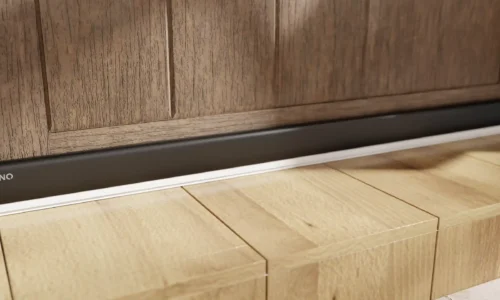
How to Choose the Right Door Seal for Your Home’s Needs
- By Xeno
- 0 Comments
- Posted on
A door seal might seem like a small addition to your home, but it plays a crucial role in keeping your home comfortable, secure, and energy-efficient. The right door seal can help block noise, prevent air leaks, keep pests out, and even enhance security.
However, with so many options available, choosing the right door seal can be confusing. This guide covers the different types of door seals, their benefits, and how to select the best one for your home.
1. Why You Need a Door Seal
Before choosing a door seal, it is important to understand its benefits:
- Energy Efficiency – A good door seal reduces air leaks, helping to maintain indoor temperatures and lower energy bills.
- Noise Reduction – If you live near a busy street or in an apartment, a door seal can help block unwanted noise for a quieter home.
- Pest Prevention – Sealing gaps around doors prevents insects, lizards, and rodents from entering your home.
- Weather Protection – In humid climates, a door seal can keep rainwater, dust, and humidity from seeping indoors.
- Enhanced Security – Some door seals reinforce the gap under doors, making it harder for intruders to slip tools or objects through.
2. Types of Door Seals and Their Uses
Bottom Door Seals
Installed at the bottom of the door, these seals prevent dust, insects, and air leaks.
Best for:
- Keeping air-conditioning or heat inside
- Blocking insects and dust
- Preventing water from entering under the door
Popular Options:
- Automatic Drop Seals – These seals automatically lower when the door is closed, offering airtight sealing without affecting door movement.
- Brush Seals – Made of flexible bristles, they allow slight air movement while keeping dust and pests out.
- Rubber or Silicone Seals – Provide a strong, weather-resistant barrier for maximum insulation.
Perimeter Seals
Installed around the edges of the door frame, these seals prevent air leaks and enhance soundproofing.
Best for:
- Noise reduction
- Energy efficiency
- Keeping air-conditioning in
Popular Options:
- Foam Weatherstripping – Easy to install, good for minor gaps, and effective for soundproofing.
- Rubber or Silicone Gaskets – Provide a strong seal and work well for energy conservation.
Magnetic Door Seals
These seals function like refrigerator door seals, creating an airtight magnetic closure.
Best for:
- Maximum insulation
- Noise blocking
- Tight security
Popular Option:
- Magnetic Weatherstripping – Perfect for metal doors, creating a tight, energy-efficient seal.
Adhesive Weatherstrips
Simple and cost-effective, adhesive strips are easy to install and remove.
Best for:
- Temporary fixes
- Quick installation
- Budget-friendly solutions
Popular Options:
- EVA Foam Strips – Lightweight and great for stopping minor drafts.
- Silicone Strips – More durable and suitable for long-term use.
3. How to Choose the Right Door Seal for Your Home
Step 1: Identify the Problem You Want to Solve
- If noise is your main concern, choose foam weatherstripping or magnetic seals.
- To block dust and pests, brush or rubber bottom seals work best.
- For better air-conditioning efficiency, perimeter seals or magnetic weatherstripping are ideal.
Step 2: Measure the Gaps Around Your Door
- Check the bottom gap – If there is a gap larger than one centimeter, a drop-down seal is best.
- Check the side gaps – If you feel air leaks, perimeter seals will help.
Step 3: Choose the Right Material
- For high humidity areas, opt for silicone or rubber seals that resist moisture.
- For doors that are frequently used, durable magnetic or foam seals work well.
- For temporary solutions, adhesive strips are a quick fix.
4. Installation Tips for Maximum Effectiveness
- Clean the surface before installation. Dust and dirt can weaken adhesive-backed seals.
- Measure twice, cut once. Ensure accurate sizing before attaching the seal.
- Use screws or nails for heavy-duty seals. Adhesive alone may not hold well for long-term use.
- Test the seal after installation. Close the door and check for any remaining air gaps.




